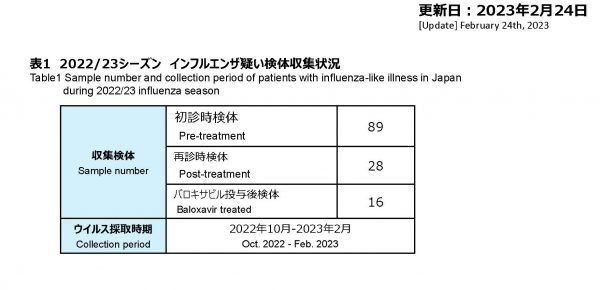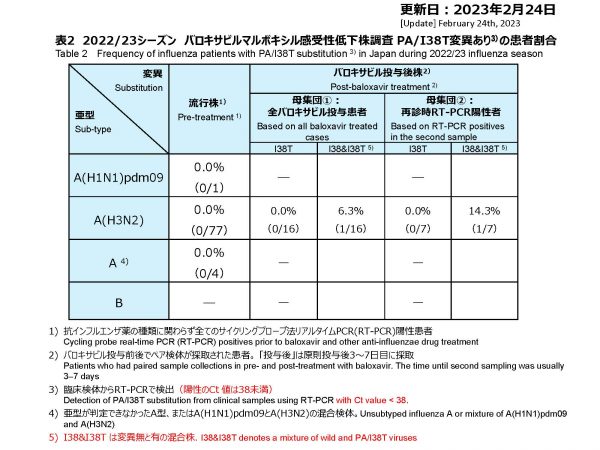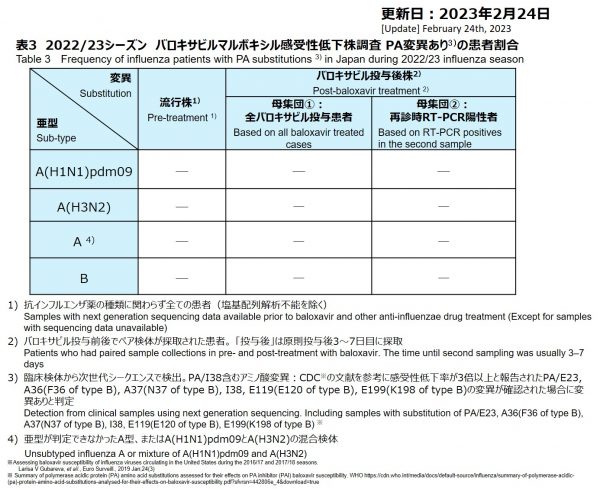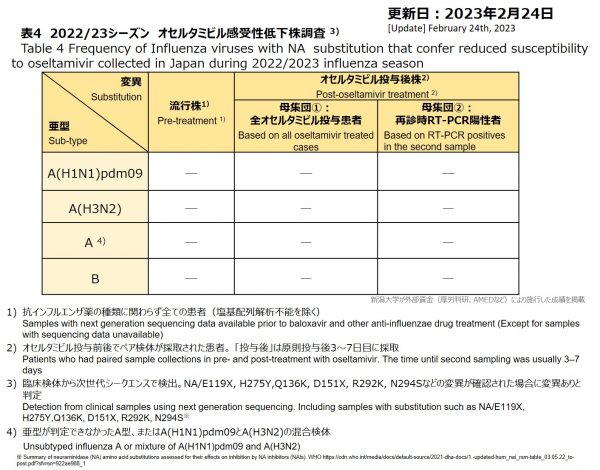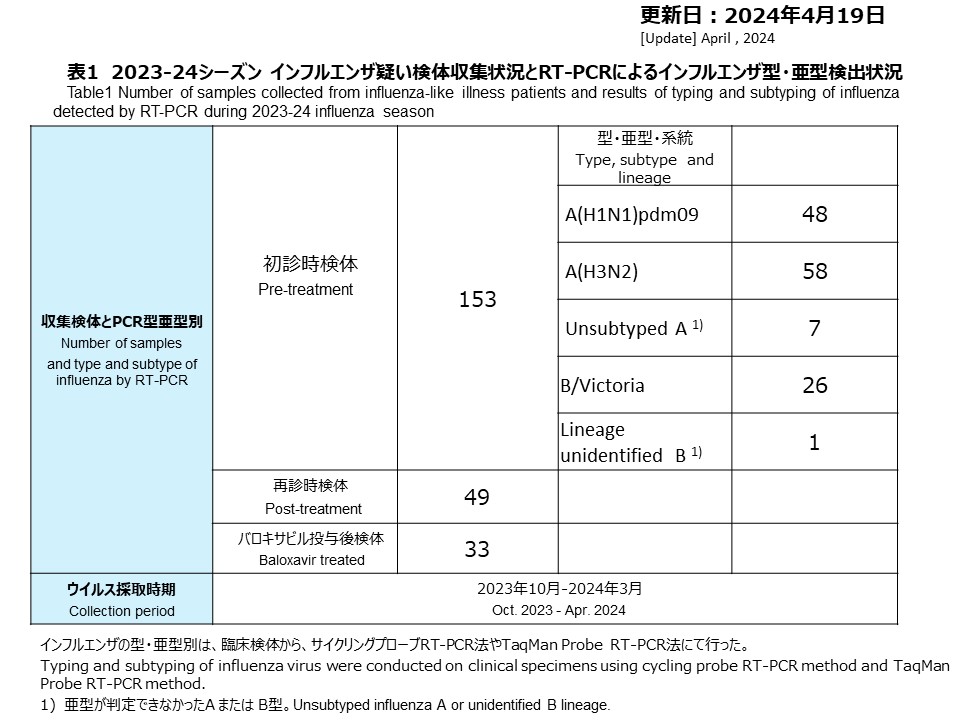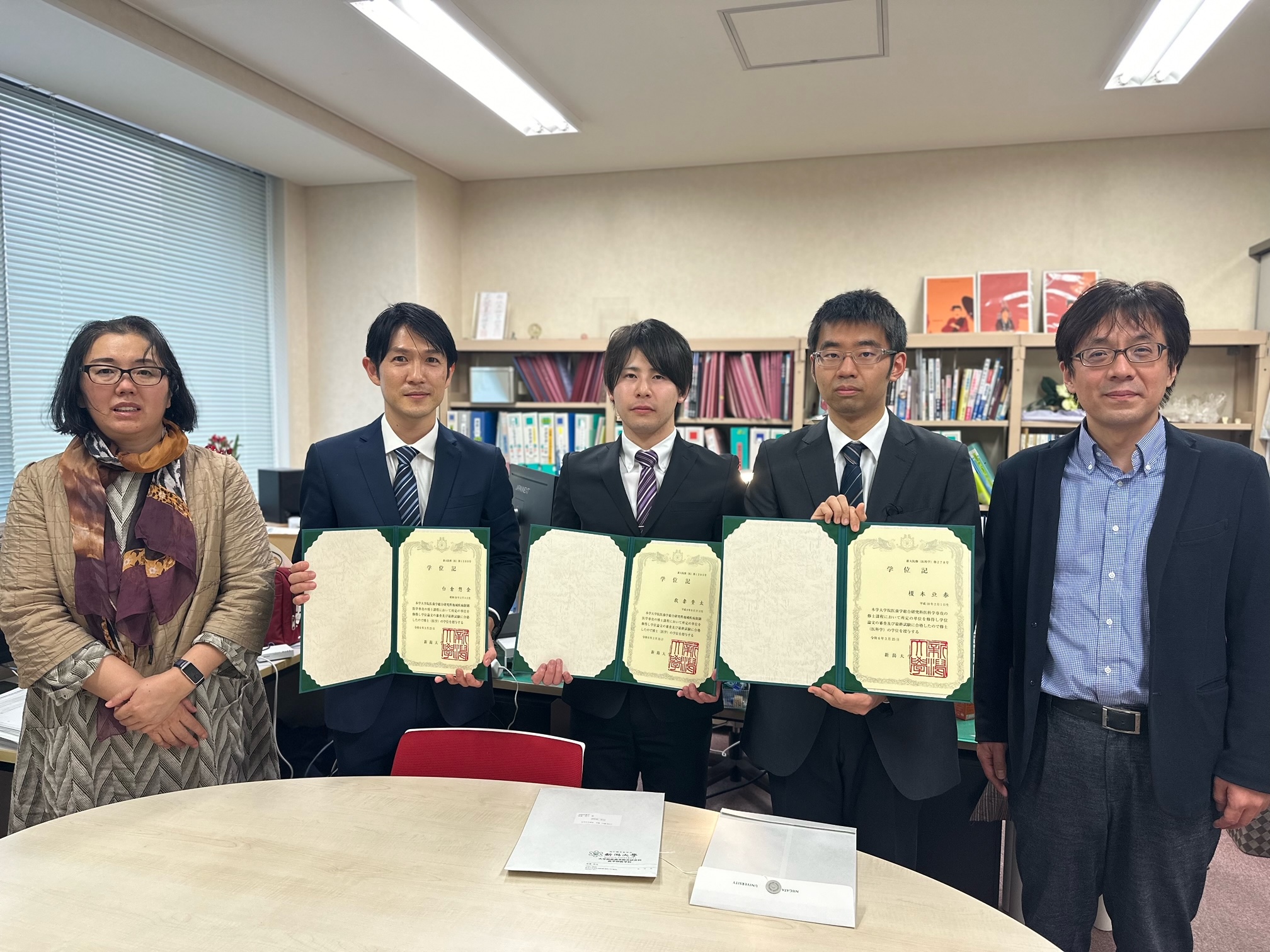2023年2月24日 抗インフルエンザ剤感受性低下株調査の結果
2022/23年シーズン 抗インフルエンザ剤感受性低下株調査の結果
新潟大学大学院医歯学総合研究科・国際保健
結果の概要
2022/23年シーズンは2023年月2月24日までに、受領したインフルエンザ疑いの検体は以下である。
検体の内訳は、初診時89株、再診時28株、うちバロキサビル投与検体16株であった(表1)。
【PA遺伝子の解析】
サイクリングプローブリアルタイムPCR法により、PA/I38T変異株の検出を行った(表2)。
PA/I38T変異ありのインフルエンザは、
A(H1Nl)pdm09の流行株(投与前株)は1検体中0件がPA/I38T変異陽性(0%)であった。バロキサビル投与後の検体は採取されていなかった。
A(H3N2)の流行株(投与前株)は77検体中0件がPA/I38T変異陽性(0%)であった。バロキサビル投与後の全症例において16検体中1件がPA/138T変異陽性(6.3%)であった。再診時RT-PCR陽性者のみで出現頻度を再計算した場合、7検体中1件がPA/I38T変異陽性(14.3%)。この再診時に検出されたPA/I38T変異株は、PA変異無しと有りの混合株であった。
A型の流行株(投与前株)は4検体中0件がPA/I38T変異陽性(0%)であった。バロキサビル投与後の検体は採取されなかった。
B型は検出されなかった。
次世代シークエンスによるPA遺伝子解析とNA遺伝子解析はまだ実施していない(表3,4)
Summary of Results.
During 2022/23 season, samples collected from influenza-like-illness patients were as below, as of February 24, 2023.
The breakdown of samples was as follows: 88 samples collected at the first visit, 28 samples at the second visit, 16 samples after baloxavir treatment (Table 1).
[PA gene analysis]
The results of the detection of PA/I38T substation by cycling probe real-time PCR are shown below (Table 2).
The percentage of patients with PA/138T substitution was;
In A(H1Nl)pdm09, pre-treatment samples were 0 positive (0%) for PA/I38T variant out of 1 specimen. No specimens were collected after baloxavir administration.
In A(H3N2), pre-treatment samples were 0 positive (0%) for PA/I38T variant out of 76 specimens. Among post treatment samples, 1 positive (6.3%) for PA/I38T variant out of 16 samples in all post-baloxavir-treated patients, 1 positive (14.3%) for PA/I38T variant out of 7 samples in RT-PCR-positives at the second visit. The PA/I38T substituted virus detected at the second visit was a mixture of those without and with PA/I38T substitution.
In unsubtyped influenza A, pre-treatment samples were 0 positive (0%) PA/I38T variant out of 4 specimens. No specimens were collected after baloxavir administration.
Influenza B was not detected.
PA and NA gene analysis by next-generation sequencing has not yet been performed (Tables 3 and 4).


